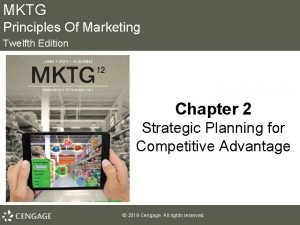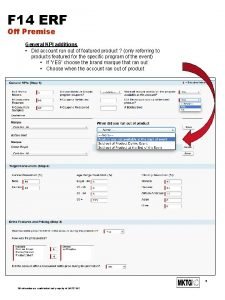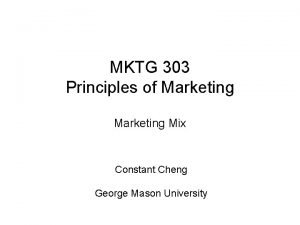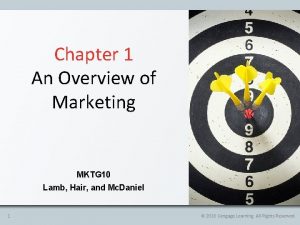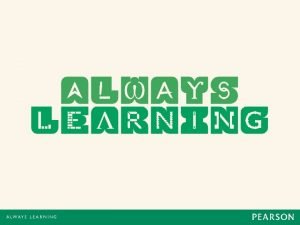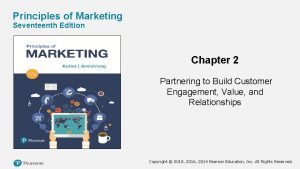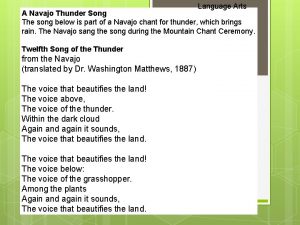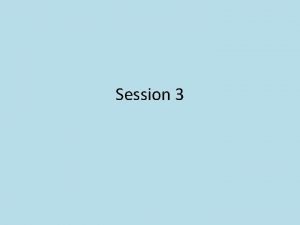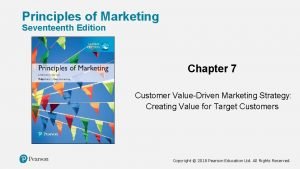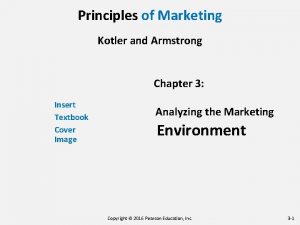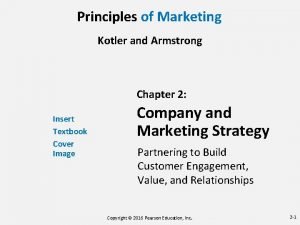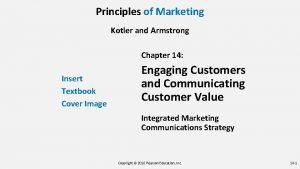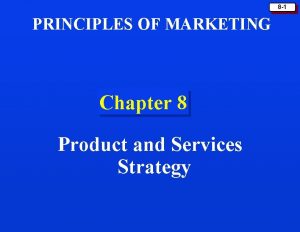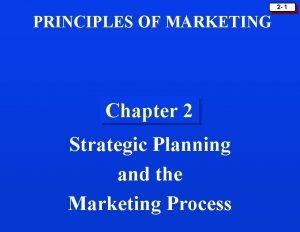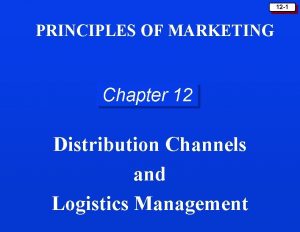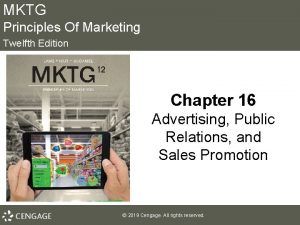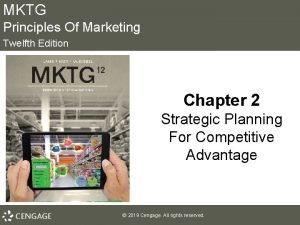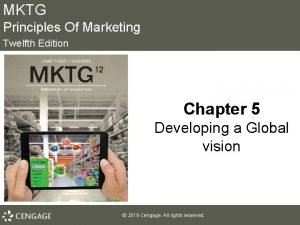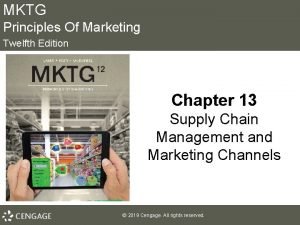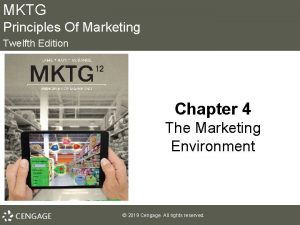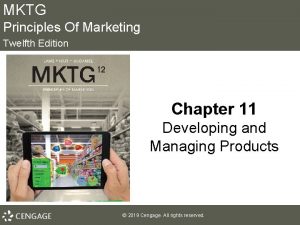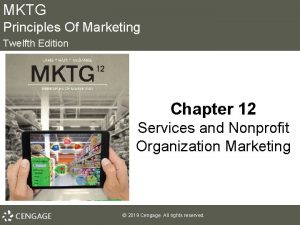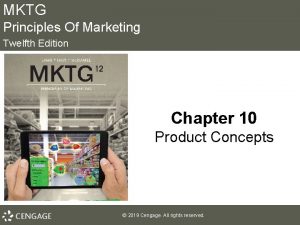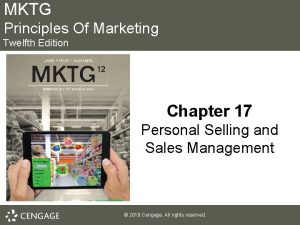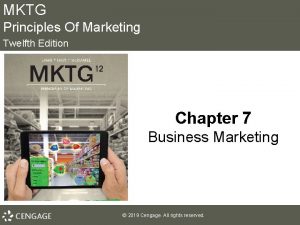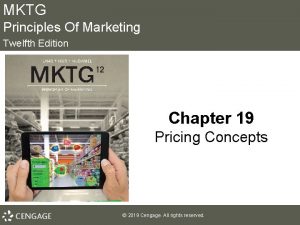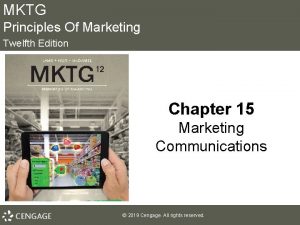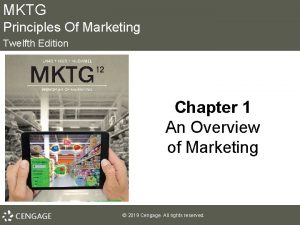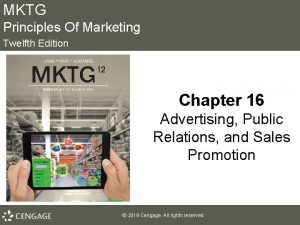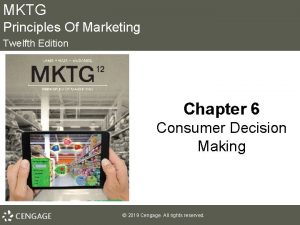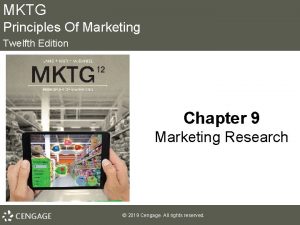MKTG Principles Of Marketing Twelfth Edition Chapter 12








































- Slides: 40

MKTG Principles Of Marketing Twelfth Edition Chapter 12 Services and Nonprofit Organization Marketing © 2019 Cengage. All rights reserved.

Learning Outcomes 12 -1 Discuss the importance of services to the economy 12 -2 Discuss the differences between services and goods 12 -3 Describe the components of service quality and the gap model of service quality 12 -4 Develop marketing mixes for services 12 -5 Discuss relationship marketing in services 12 -6 Explain internal marketing in services 12 -7 Describe nonprofit organization marketing 12 -8 Discuss global issues in services marketing © 2019 Cengage. All rights reserved.

Learning Objective 1: The Importance of Services © 2019 Cengage. All rights reserved.

Services • Result of applying human or mechanical efforts to people or objects • Involve a deed, a performance, or an effort that cannot be physically possessed • Service-oriented industries that contribute to the U. S. economy – Technology, financial services, health care, and retail © 2019 Cengage. All rights reserved.

Learning Objective 2: How Services Differ from Goods © 2019 Cengage. All rights reserved.

Characteristics of Services (1 of 2) • Intangibility – Inability of services to be touched, seen, tasted, heard, or felt in the same manner that goods can be sensed. • Inseparability – Production and consumption are simultaneous, meaning the consumer takes part in production. © 2019 Cengage. All rights reserved.

Characteristics of Services (2 of 2) • Heterogeneity – Variability of the inputs and outputs of services, which causes services to tend to be less standardized and uniform than goods. • Perishability – Inability of services to be stored, warehoused, or inventoried. © 2019 Cengage. All rights reserved.

Intangibility • Evaluating the Quality of Services – Search quality: Can be easily assessed before purchase – Experience quality: Can be assessed only after use – Credence quality: Can be difficult to assess even after purchase as customers lack necessary knowledge or experience © 2019 Cengage. All rights reserved.

Learning Objective 3: Service Quality © 2019 Cengage. All rights reserved.

Evaluating Service Quality • Reliability – Ability to perform a service dependably, accurately, and consistently • Responsiveness – Ability to provide prompt service • Assurance – Knowledge and courtesy of employees and their ability to convey trust • Empathy – Caring, individualized attention to customers • Tangibles – Physical evidence of the service © 2019 Cengage. All rights reserved.

The Gap Model of Service Quality (1 of 2) • Gap 1: The gap between what customers want and what management thinks. • Gap 2: The gap between what management thinks customers want and the quality specifications that management develops to provide the service. • Gap 3: The gap between the service quality specifications and the service that is actually provided. © 2019 Cengage. All rights reserved.

The Gap Model of Service Quality (2 of 2) • Gap 4: The gap between what the company provides and what the customer is told it provides. • Gap 5: The gap between the service that customers receive and the service they want. This gap can be positive or negative. © 2019 Cengage. All rights reserved.

Exhibit 12. 1 Gap Model Of Service Quality © 2019 Cengage. All rights reserved.

Learning Objective 4: Marketing Mixes for Services © 2019 Cengage. All rights reserved.

Product (Service) Strategy • • Service as a process Core and supplementary service products Customization/Standardization The service mix © 2019 Cengage. All rights reserved.

Service as a process Categories of Service Processes • People processing—the service is directed at a customer • Possession processing—directs to customers’ physical possessions • Mental stimulus processing—directs to people’s minds • Information processing—use technology or brainpower directed at a customer’s assets © 2019 Cengage. All rights reserved.

Core and Supplementary Service Products • Core service – Most basic benefit the customer is buying • Supplementary service – Group of services that support or enhance the core service © 2019 Cengage. All rights reserved.

Exhibit 12. 2 Core And Supplementary Services For A Luxury Hotel © 2019 Cengage. All rights reserved.

Customization/Standardization • Customized services—more flexible, respond to individual customers’ needs, and command a higher price • Standardized services—more efficient and cost less • Emerging strategy – Mass customization: Strategy that uses technology to deliver customized services on a mass basis © 2019 Cengage. All rights reserved.

The Service Mix • Each organization’s service mix represents a set of opportunities, risks, and challenges. • Service strategy decisions – Introduction of what new services to which target market – Maintenance of existing services – Elimination of services © 2019 Cengage. All rights reserved.

Place (Distribution) Strategy • Convenience – Select a service provider • Number of outlets – Intensity should meet market’s needs • Direct vs. Indirect distribution – 1. Direct distribution 2. Most use • Location – relation between market and distribution strategy • Scheduling – time-dependent service providers © 2019 Cengage. All rights reserved.

Promotion Strategy (1 of 2) • Stressing tangible cues— To make their intangible services more tangible, hotels turn down the bedcovers and put mints on the pillows. • Using personal information sources—A personal information source is someone consumers are familiar with (such as a celebrity) or someone they admire or can relate to personally. © 2019 Cengage. All rights reserved.

Promotion Strategy (2 of 2) • Creating a strong organizational image—One way to create an image is to manage the evidence, including the physical environment of the service facility, the appearance of the service employees, and the tangible items associated with a service (such as stationery, bills, and business cards) • Engaging in postpurchase communication— Postpurchase communication refers to the follow-up activities that a service firm might engage in after a customer transaction. © 2019 Cengage. All rights reserved.

Price Strategy • Defining the unit of service consumption • Determining if multiple elements are to be bundled or priced separately • Three categories of pricing objectives – Revenue-oriented pricing – Operations-oriented pricing – Patronage-oriented pricing © 2019 Cengage. All rights reserved.

Categories of Pricing Objectives • Revenue-oriented pricing – Focuses on maximizing the surplus of income over costs • Operations-oriented pricing – Seeks to match supply and demand by varying price • Patronage-oriented pricing – Tries to maximize the number of customers by varying price © 2019 Cengage. All rights reserved.

Learning Objective 5: Relationship Marketing in Services © 2019 Cengage. All rights reserved.

Levels in Relationship Marketing • Financial—Using pricing incentives • Social—Building social bonds • Customization—Developing one-to-one solutions to fit customers’ needs • Structural—Offering value-added services © 2019 Cengage. All rights reserved.

Learning Objective 6: Internal Marketing in Service Firms © 2019 Cengage. All rights reserved.

Internal Marketing • Treating employees as customers and developing systems and benefits that satisfy their needs • Critical in service firms – Employees deliver the brand promise directly to customers © 2019 Cengage. All rights reserved.

Learning Objective 7: Nonprofit Organization Marketing © 2019 Cengage. All rights reserved.

Nonprofit Organization Marketing • Effort by nonprofit organizations to bring about mutually exchanges with target markets – Nonprofit organization: Exists to achieve some goal other than the usual business goals of profit, market share, or return on investment § Governments, private museums, theaters, schools, and churches © 2019 Cengage. All rights reserved.

What Is Nonprofit Organization Marketing? • Identifying desired customers • Specifying objectives explicitly or implicitly • Developing, managing, and eliminating programs and services • Deciding on prices • Scheduling events or programs • Communicating their availability © 2019 Cengage. All rights reserved.

Unique Aspects of Nonprofit Organization Marketing Strategies (1 of 4) • Objectives – To generate enough funds to cover expenses – To provide equitable, effective, and efficient services • Selection of target markets – Apathetic or strongly opposed targets—strongly opposed to receiving their services – Pressure to adopt undifferentiated segmentation strategies—fail to recognize the advantages – Complementary positioning—complement, rather than compete © 2019 Cengage. All rights reserved.

Unique Aspects of Nonprofit Organization Marketing Strategies (2 of 4) • Product decisions – Benefit complexity—complex, long term, and intangible – Benefit strength—weak or indirect – Involvement—elicit low involvement • Place (distribution) decisions – Success is determined by a nonprofit organization’s ability to distribute its service offerings when and where customers want them © 2019 Cengage. All rights reserved.

Unique Aspects of Nonprofit Organization Marketing Strategies (3 of 4) • Promotion decisions – Professional volunteers—donates services in exchange for potential long-term benefits – Sales promotion activities—use of existing services to draw attention – Public service advertising (PSA)—promotes a federal, state, or local government • Pricing decisions – Pricing objective is to defray costs rather than to achieve a profit – Nonfinancial prices—Consumers must absorb nonmonetary costs such as time, embarrassment, and effort. © 2019 Cengage. All rights reserved.

Unique Aspects of Nonprofit Organization Marketing Strategies (4 of 4) – Indirect payment through taxes is common to marketers of free services. – Separation between payers and users—Services are used by those who are relatively poor and paid for by those who are better off financially. – Below-cost pricing—Example is University tuition © 2019 Cengage. All rights reserved.

Learning Objective 7: Global Issues in Services Marketing © 2019 Cengage. All rights reserved.

Global Issues in Services Marketing • Many U. S. service industries have been able to enter the global marketplace because of competitive advantages. • To be successful in the global marketplace, firms must: – Determine the nature of their core product – Design marketing mix that reflects each country’s cultural, technological, and political environment © 2019 Cengage. All rights reserved.

Key Terms (1 of 2) • • • Service Intangibility Search quality Experience quality Credence quality Inseparability Heterogeneity Perishability Reliability Responsiveness Assurance Empathy © 2019 Cengage. All rights reserved.

Key Terms (2 of 2) • • • Tangibles Gap model Core service Supplementary services Mass customization Internal marketing Nonprofit organization marketing Public service advertisement (PSA) © 2019 Cengage. All rights reserved.
 Mktg 12 principles of marketing
Mktg 12 principles of marketing Mktg 12th edition
Mktg 12th edition Principles of marketing chapter 9
Principles of marketing chapter 9 Ricky w griffin management 12th edition
Ricky w griffin management 12th edition Mktg 8
Mktg 8 Mktg erf
Mktg erf Differences between games and sports
Differences between games and sports Cheng, constant
Cheng, constant Mktg 10
Mktg 10 Principles of marketing fifth european edition
Principles of marketing fifth european edition Principles of marketing arab world edition
Principles of marketing arab world edition Principles of marketing chapter 2
Principles of marketing chapter 2 Principles of marketing grade 11 module 1 answer key
Principles of marketing grade 11 module 1 answer key Using mis 10th edition
Using mis 10th edition Using mis 10th edition
Using mis 10th edition Twelfth night speeches
Twelfth night speeches Twelfth night ppt
Twelfth night ppt Twelfth night poem
Twelfth night poem Themes in twelfth night
Themes in twelfth night Blogspot
Blogspot Act 2 scene 4 twelfth night summary
Act 2 scene 4 twelfth night summary Carnivalesque in twelfth night
Carnivalesque in twelfth night Themes in twelfth night
Themes in twelfth night Language
Language Twelfth night act 5
Twelfth night act 5 Stock characters in twelfth night
Stock characters in twelfth night A man lives on the twelfth floor of a tall building
A man lives on the twelfth floor of a tall building The twelfth of never
The twelfth of never Satire in twelfth night
Satire in twelfth night Deverell twelfth night
Deverell twelfth night Disappeared silent night
Disappeared silent night Ironic and humorous plays
Ironic and humorous plays Chapter 7 customer driven marketing strategy
Chapter 7 customer driven marketing strategy Principle of marketing chapter 5
Principle of marketing chapter 5 Chapter 3 principles of marketing
Chapter 3 principles of marketing Company and marketing strategy chapter 2
Company and marketing strategy chapter 2 Communication process
Communication process Principles of marketing chapter 8
Principles of marketing chapter 8 Principle of marketing chapter 2
Principle of marketing chapter 2 Principles of marketing chapter 12
Principles of marketing chapter 12 Chapter 3 marketing
Chapter 3 marketing
